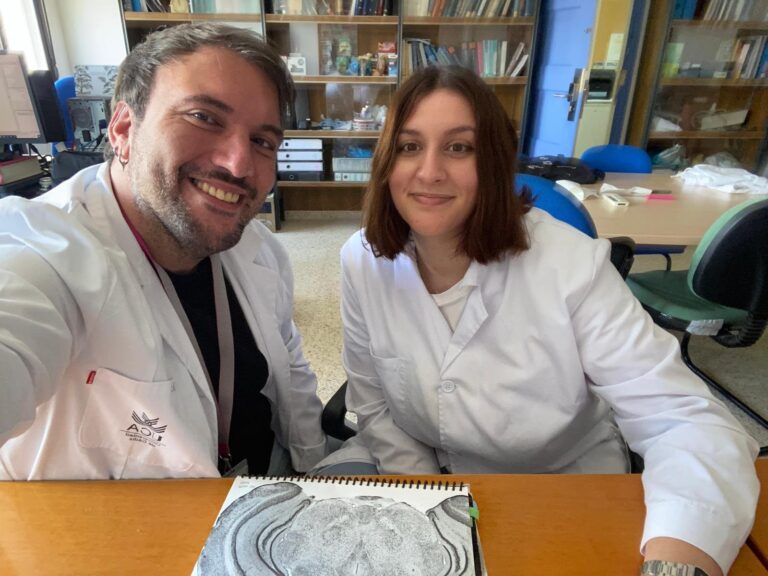A recent study led by PHOTOTHERAPORT researcher Valerija Groma at Riga Stradins University, has unveiled pivotal connections among joint inflammation, pain severity, and cognitive decline in osteoarthritis (OA) patients. Additionally, and very interestingly, they also identified promising urinary biomarkers that reflect disease burden. This new research not only deepens our understanding of OA’s broader effects beyond the joints but also opens pathways for more personalized monitoring and management strategies.

Osteoarthritis is traditionally viewed as a degenerative joint disease, yet growing evidence reveals that chronic low-grade inflammation plays a central role in pain perception and joint deterioration. This recent investigation pushes these boundaries by demonstrating how synovial inflammation may also impact psychological well‑being and cognitive performance—an underexplored but increasingly relevant dimension of OA.
Moreover, the study identifies urinary biomarkers, such as TNF‑α and TGF‑β1, that correlate with inflammation, pain intensity, and tissue damage, offering a non-invasive alternative to assess disease activity. This advances the prospect of shifting OA management from reactive approaches to proactive, patient-centered care models.
Research Design and Key Findings
The study included fifty adults diagnosed with hip or knee osteoarthritis who were scheduled for joint replacement surgery. These individuals, with a median age of 62, underwent a comprehensive assessment that included cognitive screening through the Montreal Cognitive Assessment (MoCA), analysis of synovial tissue collected during surgery, quantification of urinary inflammatory and cartilage degradation biomarkers, and advanced bioinformatic clustering to identify distinct clinical profiles.
Approximately one-quarter of the participants exhibited moderate to severe synovial inflammation. This subgroup also reported more intense joint pain and a higher prevalence of anxiety and depressive symptoms, suggesting a clear association between local joint inflammation and systemic mental health outcomes. Although most of the cohort displayed only mild cognitive decline, lower cognitive scores were observed in patients with more severe inflammation and older age, indicating a potential link between joint pathology and early neurocognitive impairment.
Urinary biomarker analysis further reinforced these findings. Elevated levels of TNF‑α in urine samples were associated with higher body mass index and greater severity of pain and synovitis. TGF‑β1 levels in urine reflected the extent of immune cell infiltration in the synovial tissue, acting as a potential surrogate for active joint inflammation. Researchers found a significant correlation between inflammatory markers, such as TNF-α and TGF-β1, and cognitive function, with elevated synovitis scores linked to poorer cognitive outcomes. Additionally, they have demonstrated that urinary biomarkers, specifically CTX-II and COMP, may serve as valuable non-invasive indicators of cartilage degradation and overall disease progression in OA patients.
Conclusion and Future Outlook
This study delivers compelling evidence that synovial inflammation in osteoarthritis extends beyond the local joint environment and is significantly associated with both heightened pain perception and early cognitive and psychological symptoms. By identifying TNF‑α and TGF‑β1 in urine as reliable markers of inflammation and disease severity, the researchers present a promising, non-invasive method for evaluating and monitoring osteoarthritis progression in clinical settings.
Looking ahead, these findings pave the way for more targeted and personalized approaches to OA management. Future longitudinal studies will be crucial to determine whether interventions that modulate inflammatory responses also influence urinary biomarker profiles and improve clinical outcomes. In addition, therapeutic strategies tailored to specific inflammatory subgroups—such as anti-cytokine treatments, lifestyle modifications, or neuroprotective interventions—may enhance both physical and mental health in OA patients. The study also underscores the value of integrating cognitive and psychological assessments into routine OA care, as early recognition of these symptoms could improve overall patient quality of life and treatment effectiveness.
In conclusion, this research supports the integration of cognitive and psychological evaluation into OA care routines. Recognising and addressing the full spectrum of symptoms may not only improve quality of life but also enhance the efficacy of treatment strategies. As our understanding of osteoarthritis evolves, this work reinforces the need for a multidimensional approach that considers both physical and neuropsychological components of the disease.
Reference article:
“Interconnected Pathways: Exploring Inflammation, Pain, and Cognitive Decline in Osteoarthritis”. Mihails Tarasovs, Sandra Skuja, Simons Svirskis, Liba Sokolovska, Andris Vikmanis, Aivars Lejnieks, Yehuda Shoenfeld and Valerija Groma. Int. J. Mol. Sci. 2024, 25(22), 11918; https://doi.org/10.3390/ijms252211918



